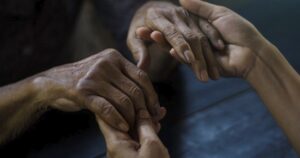As we all know by now, true heroes don’t always wear capes.
Since February is Black History Month, we are taking this time to reflect on our own black heroes who have helped make the care industry what it is today. The heroes profiled here are men and women who not only dedicated their lives to caring for their fellow man, but they did so while breaking barriers and shattering stereotypes.
Black Caregivers Who Shaped the Care Industry
We honor the following black caregivers who forever shaped the care industry.
Dr. Rebecca Lee Crumpler
Born in Delaware in 1831, Dr. Rebecca Lee Crumpler directly challenged the prejudice that prevented African Americans from pursuing careers in medicine. After working as a nurse in Massachusetts, Crumpler was admitted into the New England Medical College in 1860. When she graduated with her M.D. in 1864, Crumpler trailblazed her way into history by being not only the first African American woman to graduate from the New England Female Medical College but by being the very first woman in the whole United States to earn an M.D.
Crumpler’s place in history was sealed with the publication of her book A Book of Medical Discourses: In Two Parts in 1883, which addressed issues in children’s and women’s health.
Charles Richard Drew
Nearly 21 million blood components are transfused each year in the United States, and Charles Richard Drew is the man to thank for the lifesaving procedure. Known as the Father of Blood Banking, Drew was born in Washington D.C. in 1904, where he excelled through his school years in academics and athletics.
Having done his doctoral research in best practices for banking and transfusing blood, his research led him to develop a method to preserve blood plasma that saved countless lives during WWII. He also led the first blood bank through the American Red Cross and created what we now know as “bloodmobiles.” During his time with the American Red Cross, he protested against their practice of racially segregating blood.
Daniel Hale Williams
When Daniel Hale Williams graduated from what is now Northwestern University Medical School in Chicago, he quickly opened a private practice where he treated both white and black patients. However, in the wider world of medicine at the time, black doctors were not allowed to work in private hospitals.
As a result of this unfairness, Williams founded Provident Hospital in 1891, the nation’s first black-owned integrated hospital. He used the progressive hospital to provide training for black interns and established the first school for black nurses there. Additionally, Provident Hospital served the black community, greatly increasing healthcare access for a marginalized and largely segregated population. While practicing at Provident, Williams performed what is considered the first documented successful open-heart surgery on a human.
Solomon Carter Fuller
The grandson of former slaves on his father’s side and medical missionaries on his mother’s, Solomon Carter Fuller graduated from Boston University School of Medicine with his M.D. He went on to further research at the University of Munich, Germany, where he studied under Alois Alzheimer studying the traits of dementia.
After returning to the United States, he continued his research on what would later be known as Alzheimer’s disease and other mental illnesses such as schizophrenia and depression. Fuller published the first comprehensive review of Alzheimer’s disease in 1912 and is known best for his groundbreaking research on the brain’s physical changes that occur in Alzheimer’s patients.
Patricia Era Bath
As a young intern at Harlem Hospital, Patricia Era Bath made an observation that changed the course of medicine and her own career forever. During her internship, she observed half of the black patients she treated were blind or visually impaired in some way. By contrast, patients she treated at Columbia, patients who were largely white, didn’t have nearly high visual impairment rates. This observation led her to research that ultimately determined that blindness among the black community is double that of the white community.
Reaching the conclusion this was because of a lack of access to ophthalmic care, Bath created the discipline of community ophthalmology, which is now operative worldwide. Community ophthalmology combines public health, community medicine, and clinical ophthalmology to provide quality eye care to underserved populations.
Sources:
https://www.aamc.org/news-insights/celebrating-10-african-american-medical-pioneers
https://www.everydayhealth.com/healthy-living/african-american-pioneers-who-changed-healthcare/




















